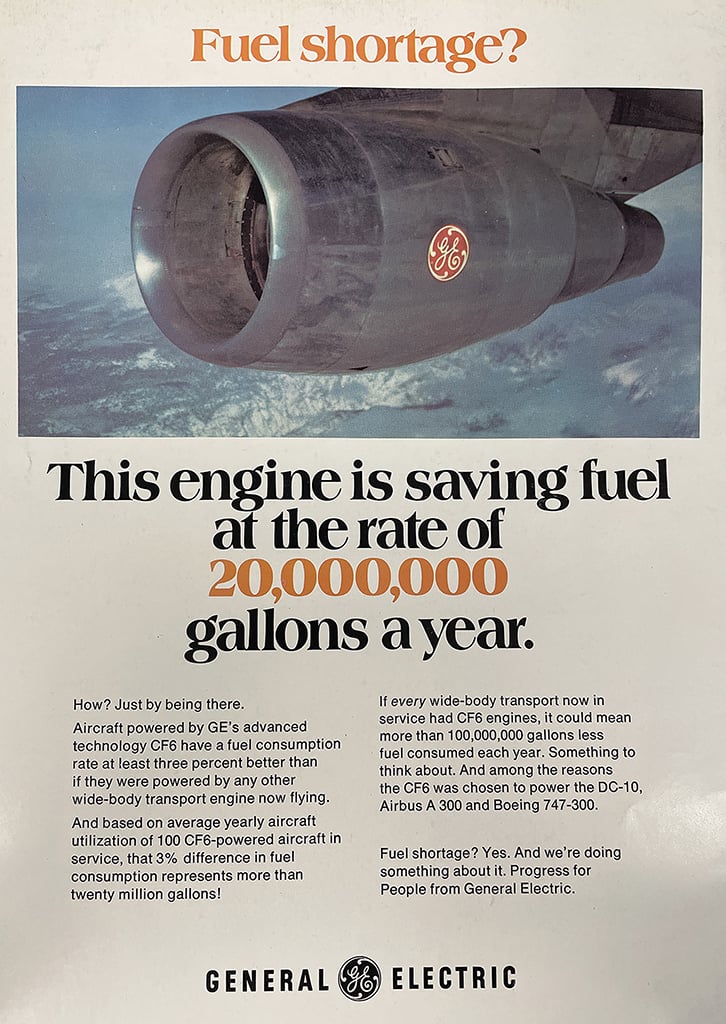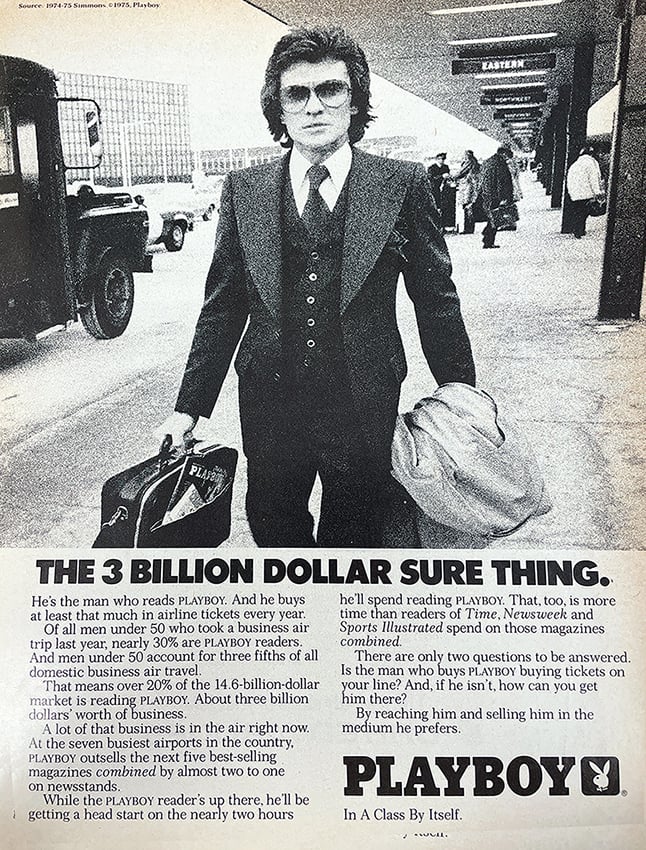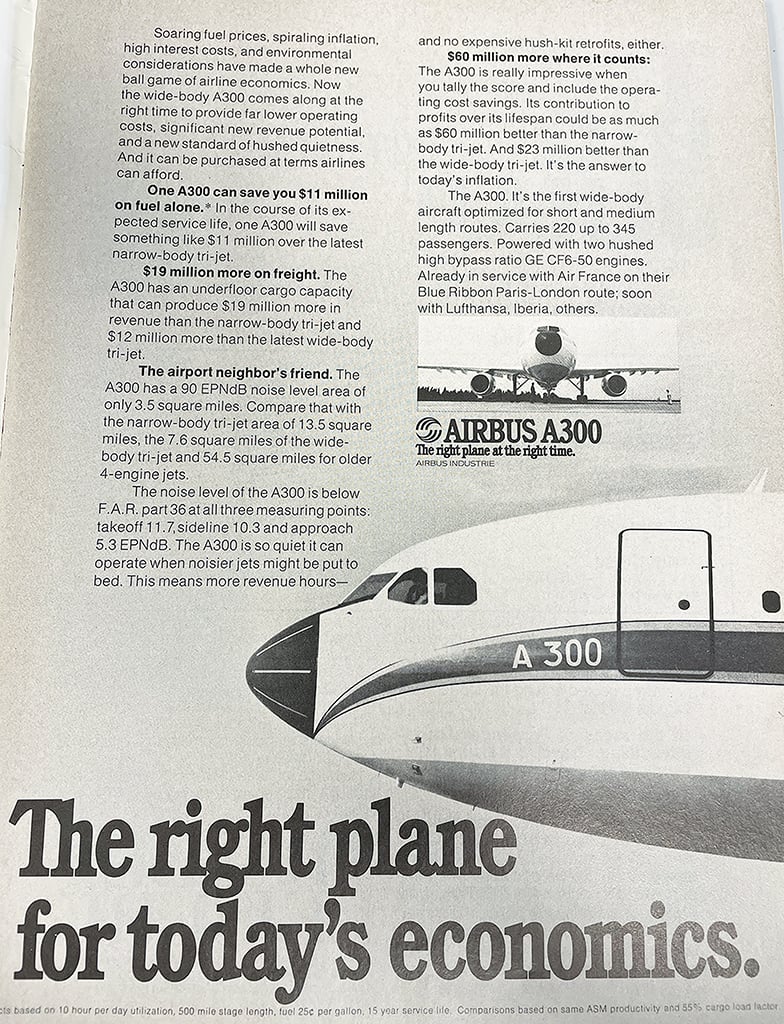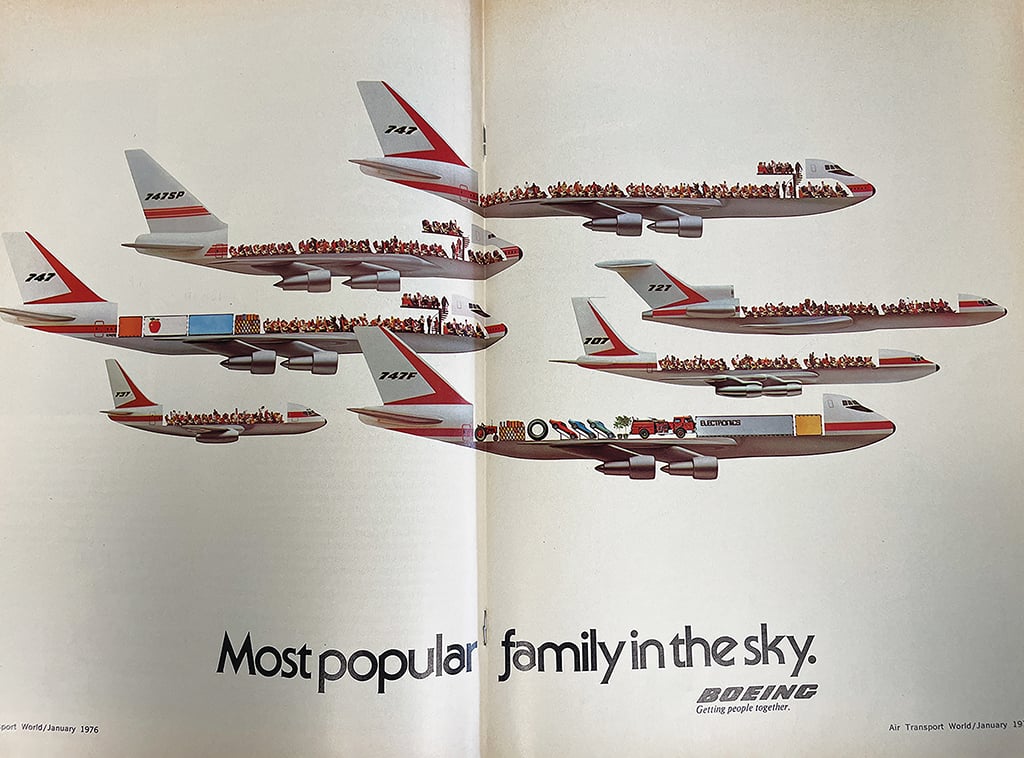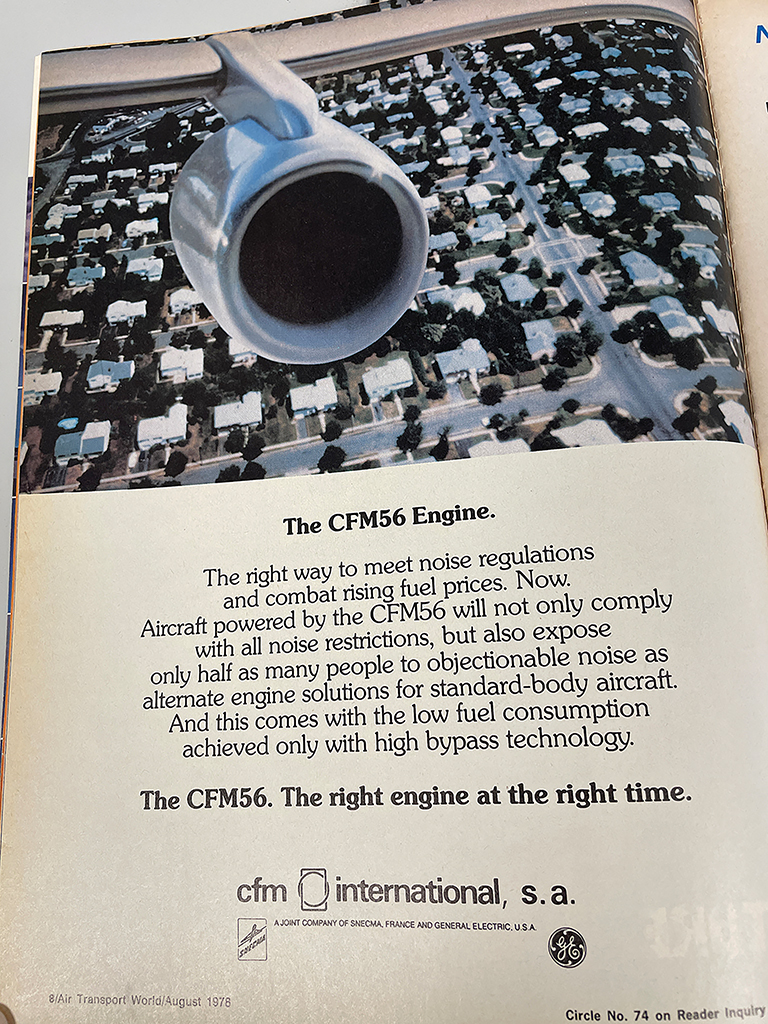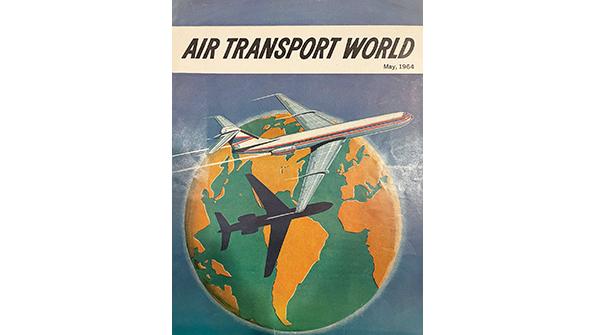
First issue of ATW, May 1964
ATW, which has been publishing a monthly magazine since 1964, began recognizing airlines for their industry achievements in 1974, with United Airlines named as the first Airline of the Year. Since then, hundreds of airlines, manufacturers, companies and individuals have walked across the stage at what many in the industry today call the “Oscars” of the airline industry.
As we look to 2024, and as a run-up to our 50th year of recognizing industry achievements on May 31, 2024, we invite you to look back with us on the Awards and key aviation events ATW has covered over the past 50 years, which we will present 10 years at a time over the next several issues.
Winston Church is quoted as saying, “The longer you can look back, the further forward you can look.” What we learned from looking back into our archives is that aviation has been amazingly resilient as it has dealt with repeated challenges over the years, including US deregulation, global economic uncertainty, rising fuel prices, cost-cutting measures, and declining and rising demand—many of the same issues the industry deals with today. Sustainability issues—from cutting emissions and noise, and even an early experiment into hydrogen-electric aircraft—have been on the industry’s agenda for years as new aircraft with more fuel-efficient and quieter engines and technologies were developed.
Hopefully, this review on key aviation events through ATW’s archives will cause the industry to keep looking “further forward” to the next-generation of industry achievements. It is sure to be a great ride.
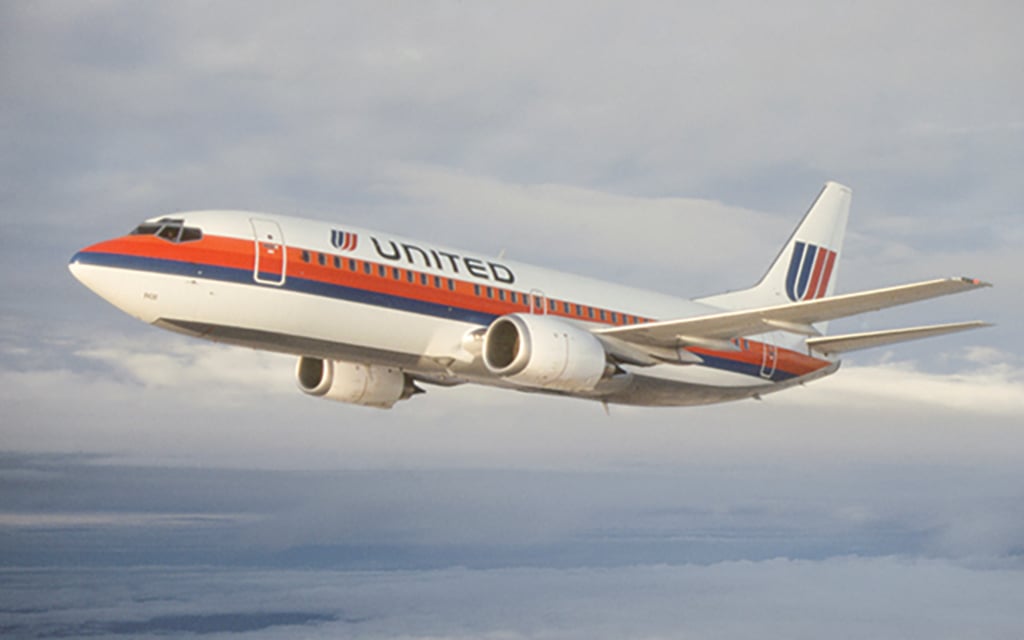
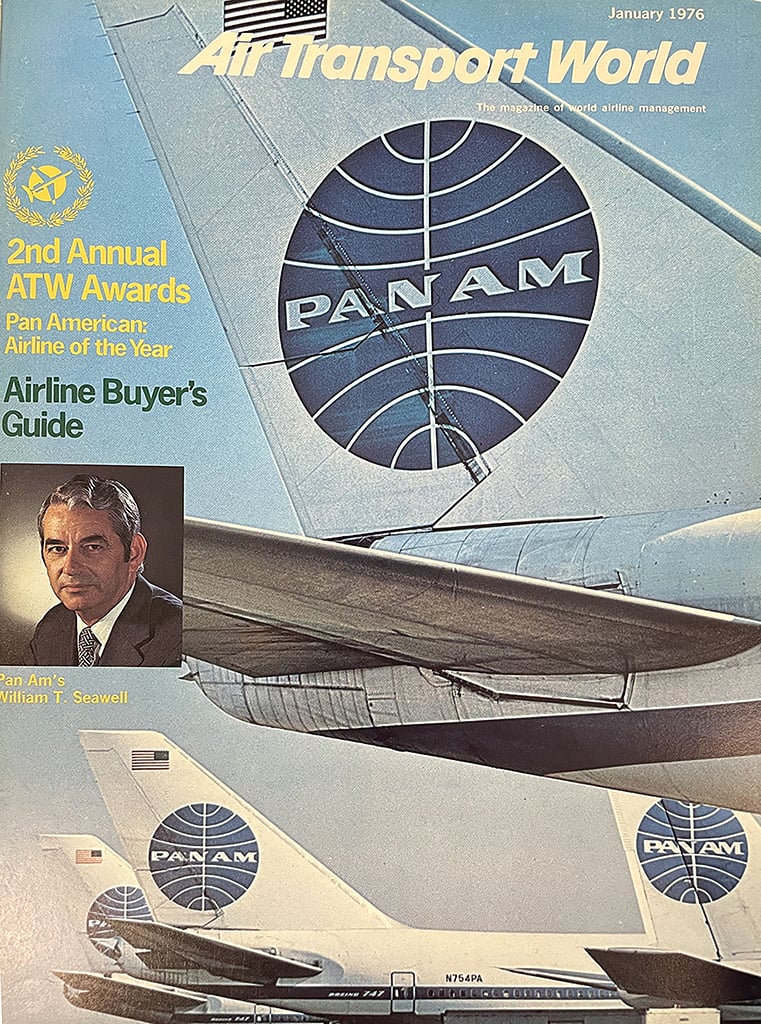


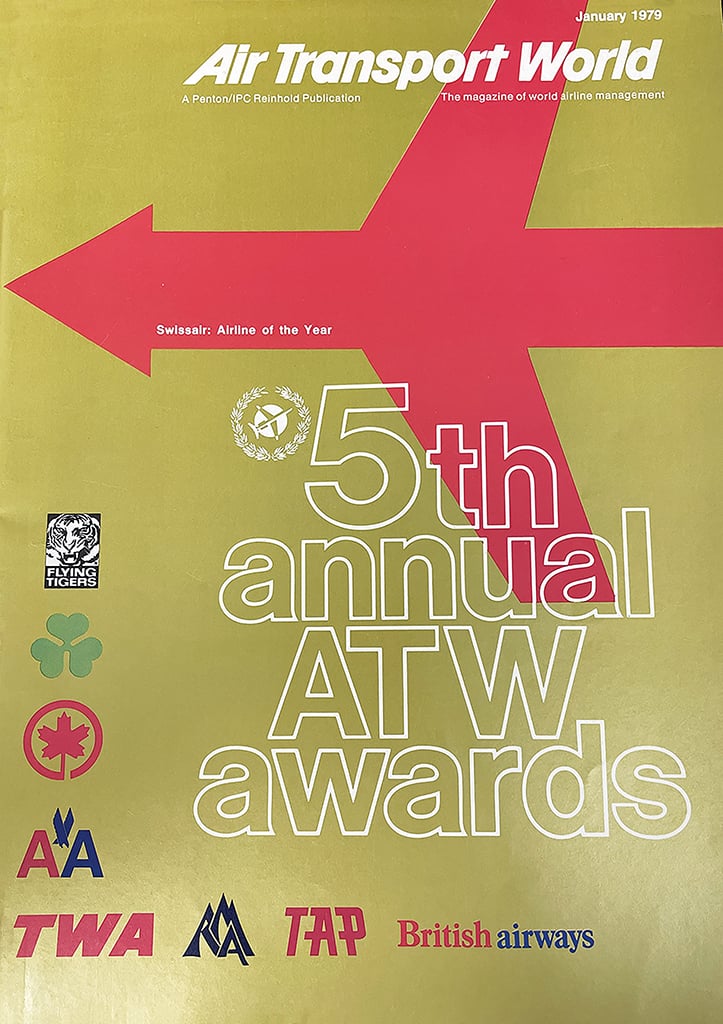

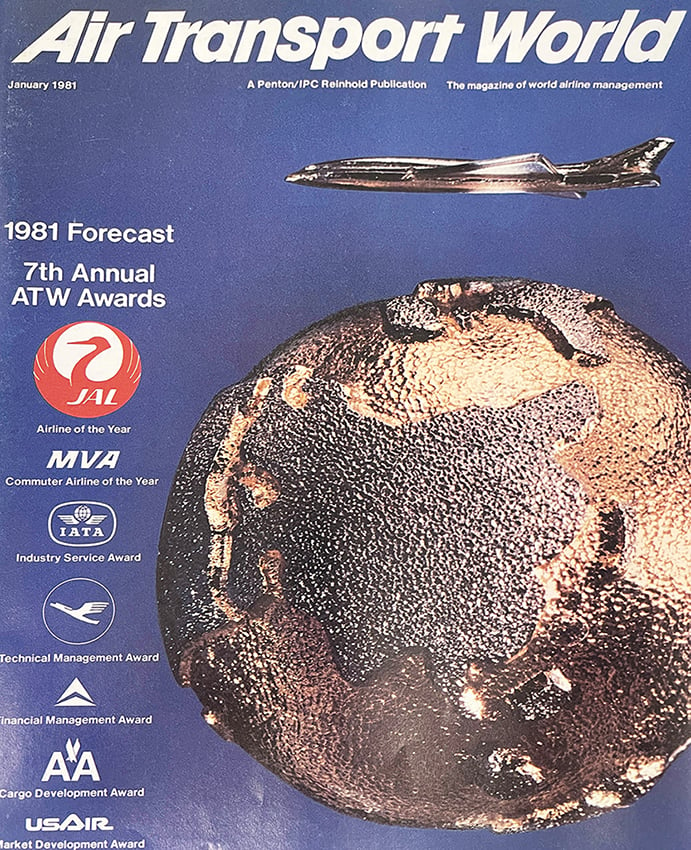
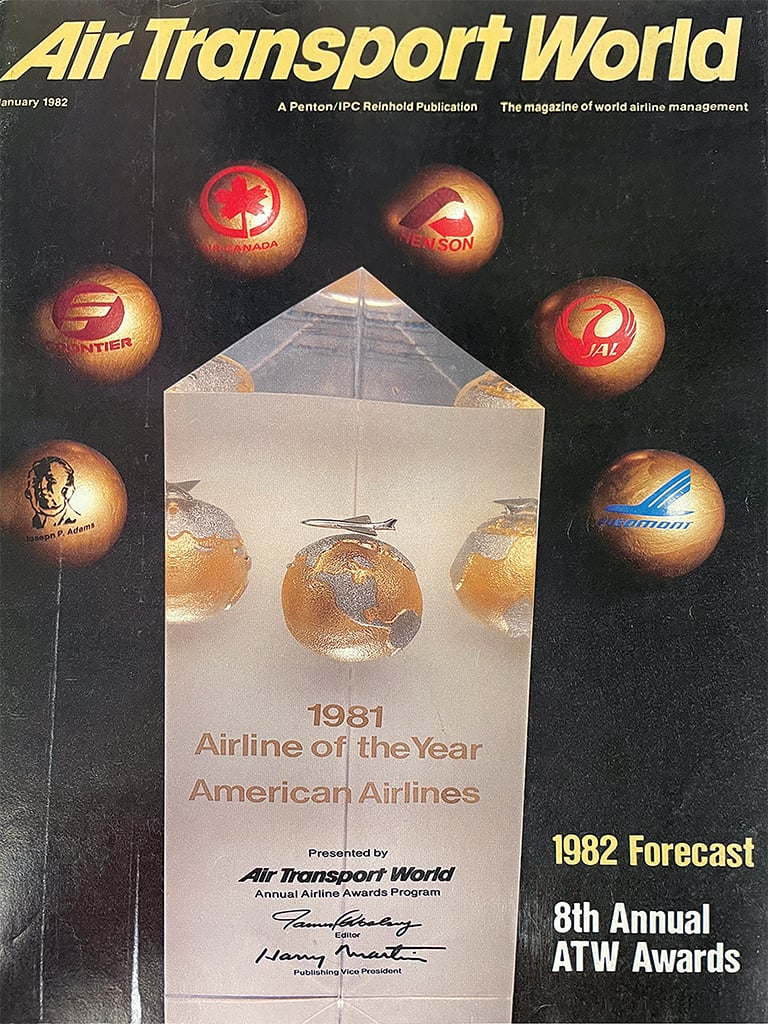
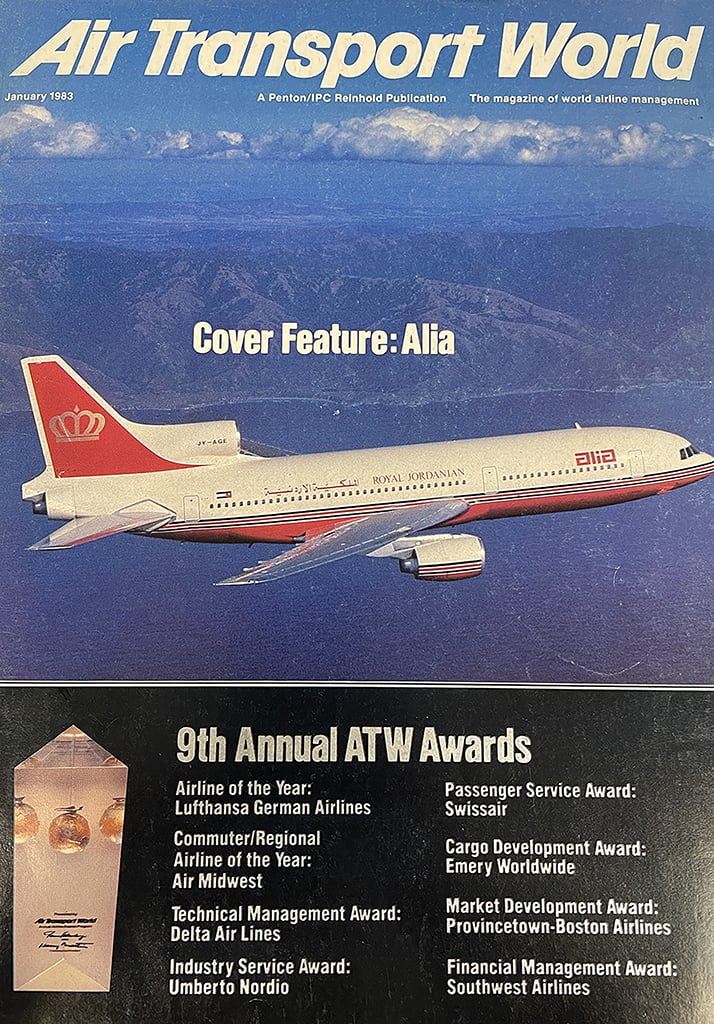

KEY EVENTS
May 1964: North Atlantic traffic up 680% since 1950, 14-year study showed.
January 1974: Australian flag carrier Qantas (an acronym for Queensland and Northern Territory Aerial Services) made the transition to mass transportation.

June 1974: Nine airlines were expected to operate various versions of the Boeing 747 freighter by year-end. They were Air Canada, Air France, American Airlines, the Flying Tiger Line, Japan Airlines, Korean Air, Seaboard World Airlines and two unidentified airlines.
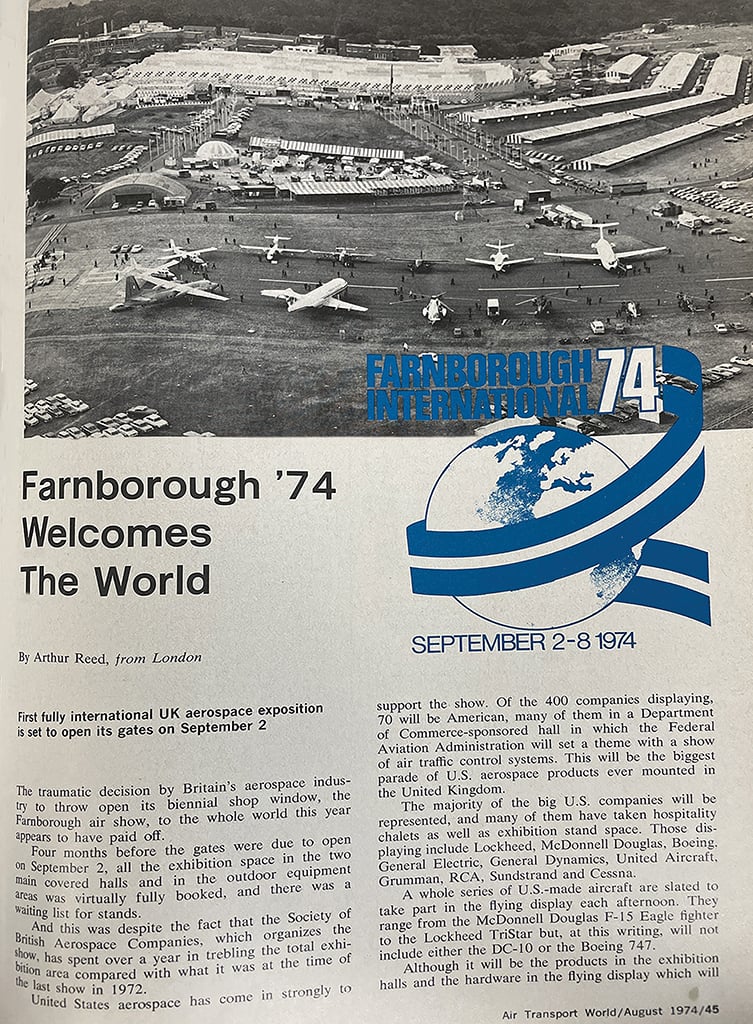
August 1975: Automated check-in was gaining popularity as an ATW article on Western Airlines (acquired by Delta Air Lines in 1987) said the station-oriented computer terminal system was “proving to be flexible and efficient.” It stated: “Computer preparation of tickets is planned next, along with through seat selection for multi-leg flights. Possibilities for the future include baggage tag and boarding pass printing, although the economics of such additions are being evaluated in the light of forecasts of future traffic volumes and the cost-effectiveness of such automation.”
September 1975: Airline executives attending the IATA AGM in Oslo faced the industry’s “bleakest outlook” that included worldwide inflation that stemmed from tripling fuel costs, resulting in declining traffic.
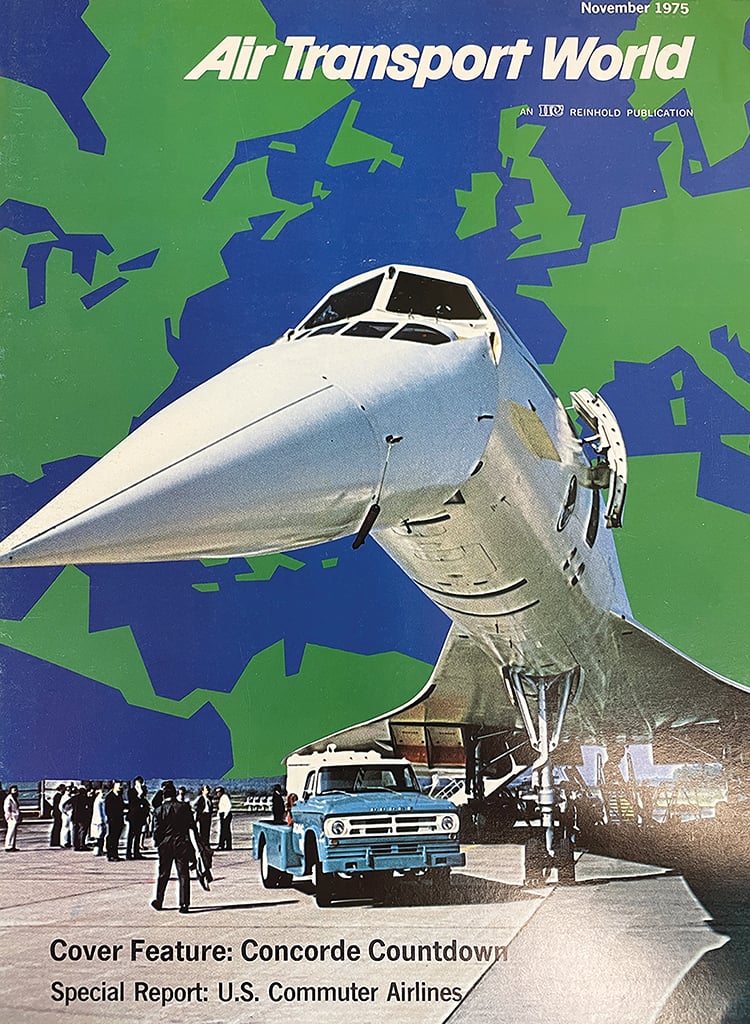
February 1976: The 22,000-lb. thrust CFM56 high-technology fan engine passed the 1,000-hr. test point. The rapid rise in airline jet fuel costs was making new technology engines a “must, not just a wish.”
January 1977: Meal service spending: An ATW survey showed carriers had begun to shift to an emphasis toward snacks and other more economical forms of inflight food. In 1975, the per-meal cost average was nearly $3.50; in 1976, it was $2.80.
July 1978: It was predicted that airlines could face up to $10 billion in costs to comply with the 1985 US deadline on aircraft engine noise and proposed US engine emission laws.
September 1978: Merger fever began to sweep the US. Potential mergers included: Continental-Western, North Central-Southern, National-Pan Am-Texas International, and Seaboard World-Flying Tigers.
November 1978: Airbus was gearing up to start production on the 200-seat A310 in March 1979.

April 1979: Digital avionics systems were beginning to appear in the McDonnell Douglas DC-9-80, the Boeing 757 and 767 to ease cockpit workload.
June 1981: Simulators were saving airlines $138 million a year, an ATW survey found, and savings were expected to increase rapidly as fuel prices increased and FAA approved more simulator training for pilots.
August 1981: Ancillary revenues were becoming a significant source of income for global airlines, an ATW survey revealed, with reported earnings of more than $2.45 billion from ancillary activities in 1980.

March 1982: The Boeing 757, which rolled out Jan. 13, 1982, made its first flight Feb. 19, 1982.
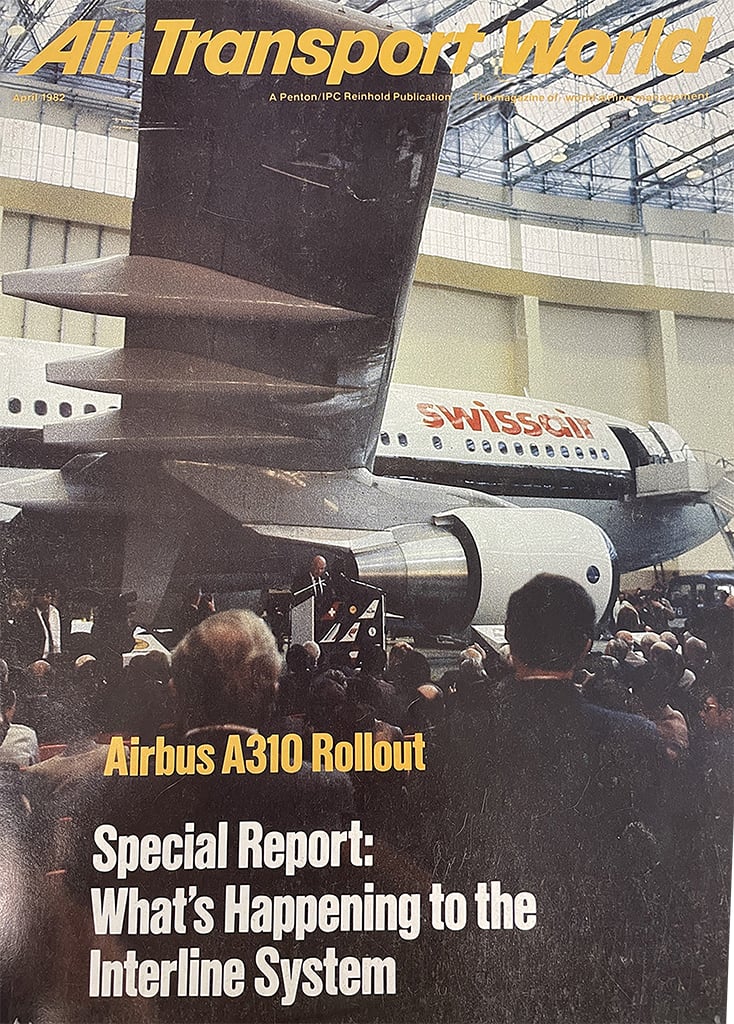
October 1982: Boeing rolled out the 747-300 on Sept. 21, 1982, and delivered it on March 5, 1983, to Swissair, which ordered five of the type for $550 million at list prices.
ADVERTISING IN ATW

